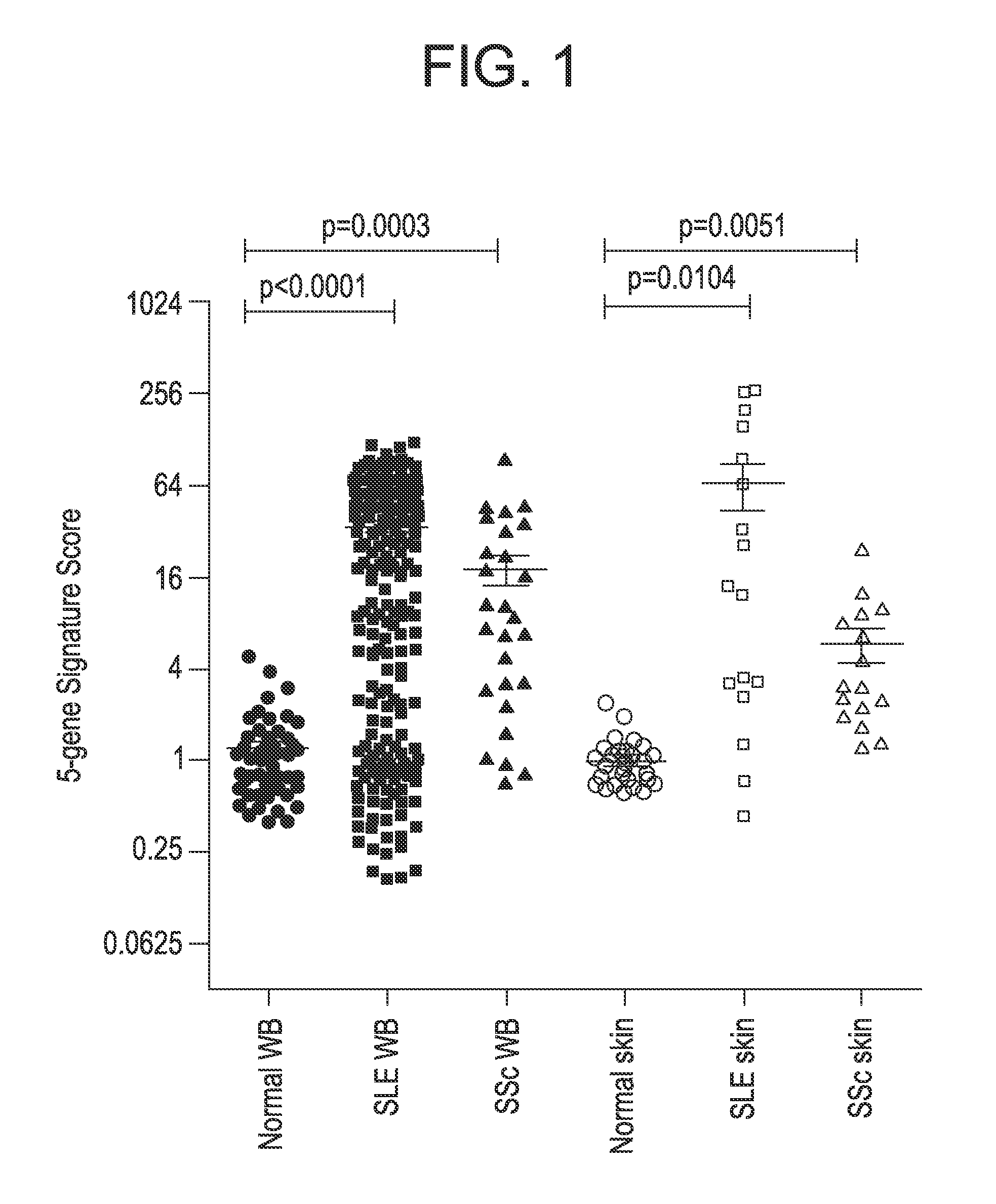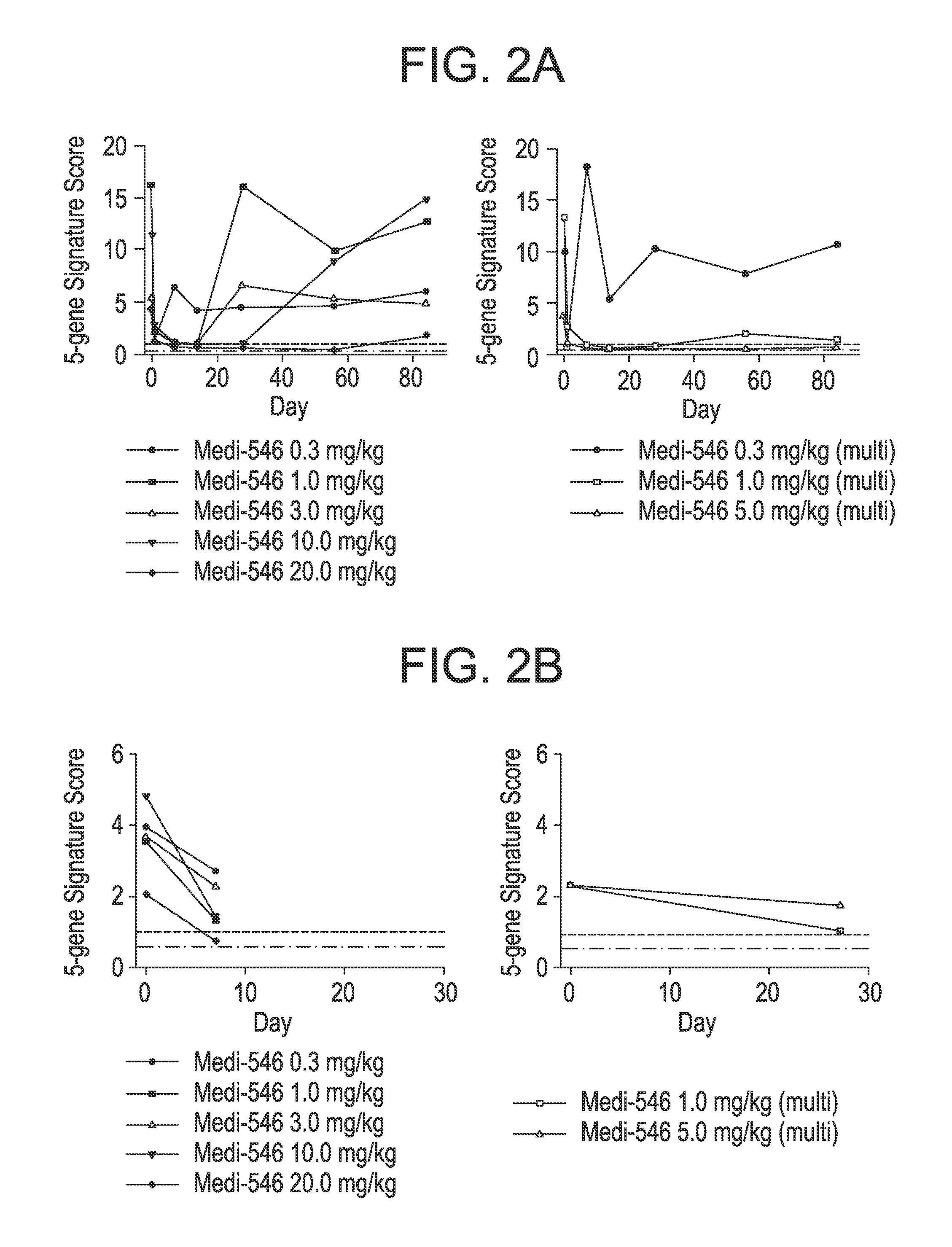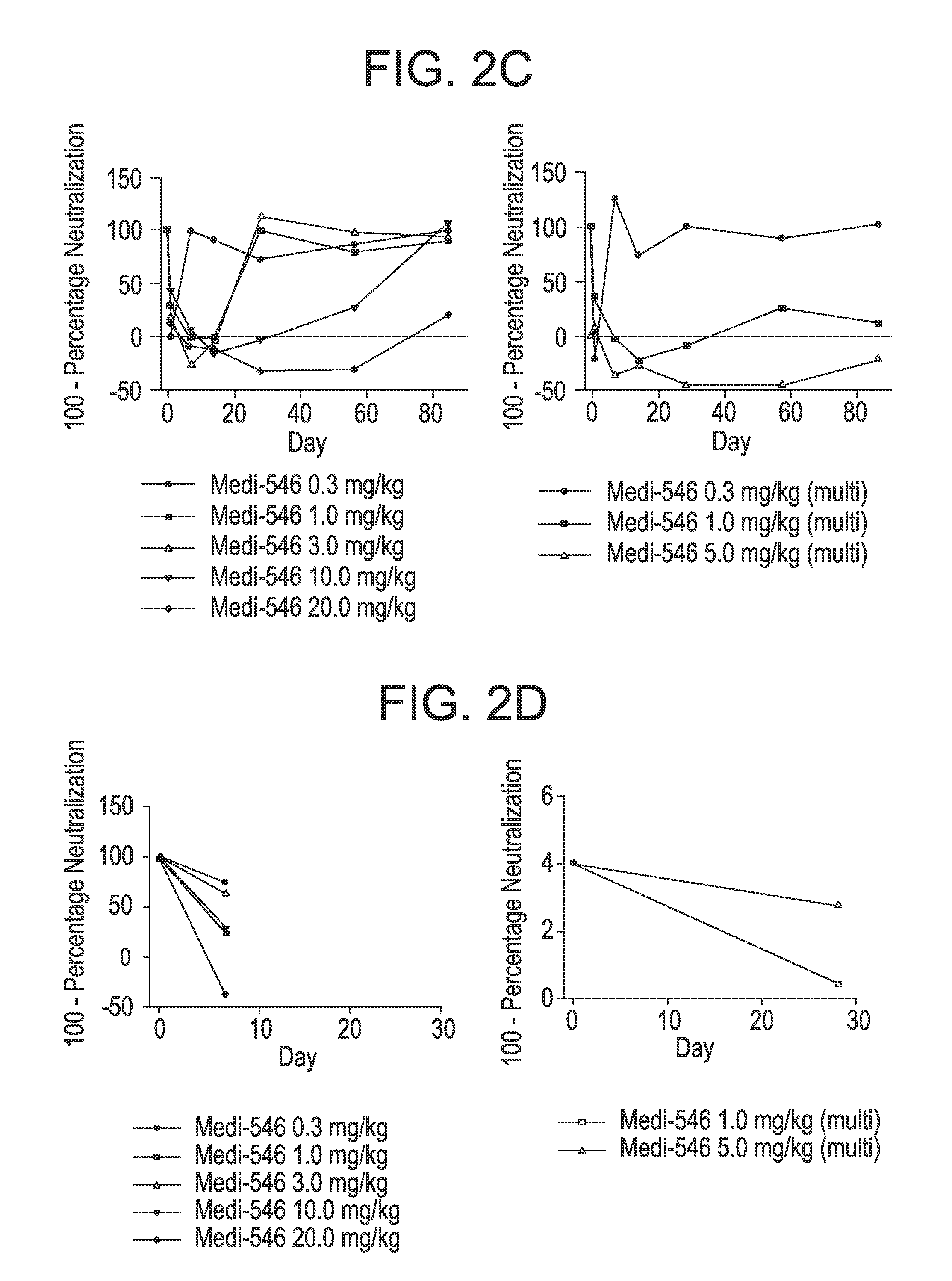Fixed dosage regimens for anti-type I interferon receptor (IFNAR) antibodies
a technology of interferon receptor and fixed dosage regimen, which is applied in the field of autoimmune diseases, can solve the problems of long and costly process for the development of new drugs, low success odds, and inability to accelerate or reduce the cost of small molecule drugs
- Summary
- Abstract
- Description
- Claims
- Application Information
AI Technical Summary
Benefits of technology
Problems solved by technology
Method used
Image
Examples
example 1
Type I IFN Signature as a PD Marker
[0254]A composite PD biomarker was developed using a five gene type I IFN GS shared by SLE and SSc, both in blood and in disease tissue (skin). The five gene type I IFN GS is a reliable surrogate of type I IFN activity in the blood as well as a correlate with baseline disease activity in SLE and SSc. There is also a strong concordance in this GS score between blood and skin specimens from SLE or SSc patients (Higgs et al., Ann. Rheum. Dis. 70:2029-2036 (2011), allowing the use of this type I IFN signature in blood as a PD biomarker to measure pharmacological effect of MEDI-546.
[0255]The five type I IFN-inducible genes (IF127, IF144, IF144L, RSAD2, and IFI6) used to measure the PD of MEDI-546 are a subset of the 21 genes used as PD markers for sifalimumab, an anti-IFN-α mAb therapy in SLE described previously (Yao et al., Arthritis Rheum. 60:1785-1796 (2009); Yao et al., Hum. Genomics Proteomics 2009:374312 (2009); Yao et al., Arthritis Res. Ther. 1...
example 2
MEDI-546 Completely Suppressed the Type I IFN Signature in SSc Patients in a Dose-dependent Manner
[0262]The type I IFN GS described above was used in a FTIH study for MEDI-546 in SSc. Besides observing a dosing dependent PD effect, this study showed for the first time that an antibody that targets the type I IFN signaling pathway had the ability to normalize the type I IFN signature in both blood and disease tissue in a disease where type I IFN might play a role in the disease pathogenesis. Furthermore, for several SSc patients that had comparable level of the type I IFN signature with that in SLE, a near complete suppression of the type I IFN signature (duration of suppression varied in response to difference in dosing) was observed following MEDI-546 treatment.
[0263]TABLE 4, supra, shows the summaries of baseline demographic and type I IFN GS status as determined by type I IFN GS score for SSc patients enrolled in the FTIH study (MI-CP180) before they received MEDI-546 treatment (...
example 3
Receptor Internalization Kinetics
[0267]Kinetics of MEDI-546 internalization in IFNAR1 expressing THP-1 cells was assessed quantitatively using live-cell confocal fluorescent imaging technology (FIG. 3). Fluorescently labeled MEDI-546 (MEDI-546-Alexa647) bound to THP-1 cells, while no binding of IgG-Alexa647, the isotype control of MEDI-546, was observed. This result demonstrated specific binding to THP-1 cells by MEDI-546 (FIG. 8). The translocation of MEDI-546-Alexa647 from the cell surface to the cytoplasm was monitored over time using a confocal fluorescent imager. Overlays of fluorescence images for cytoplasm (CFSE) and antibody (Alexa647) signals prior to and after the internalization of MEDI-546-Alexa647 are shown in FIGS. 3A and 3B, respectively.
[0268]While initially MEDI-546-associated fluorescence was predominantly localized on the cell surface (FIG. 3A), at 40 min, MEDI-546-Alexa647 signals were seen in punctuated spots located in the cytoplasm (FIG. 3B). Kinetic images re...
PUM
| Property | Measurement | Unit |
|---|---|---|
| time | aaaaa | aaaaa |
| time | aaaaa | aaaaa |
| time | aaaaa | aaaaa |
Abstract
Description
Claims
Application Information
 Login to View More
Login to View More - R&D
- Intellectual Property
- Life Sciences
- Materials
- Tech Scout
- Unparalleled Data Quality
- Higher Quality Content
- 60% Fewer Hallucinations
Browse by: Latest US Patents, China's latest patents, Technical Efficacy Thesaurus, Application Domain, Technology Topic, Popular Technical Reports.
© 2025 PatSnap. All rights reserved.Legal|Privacy policy|Modern Slavery Act Transparency Statement|Sitemap|About US| Contact US: help@patsnap.com



